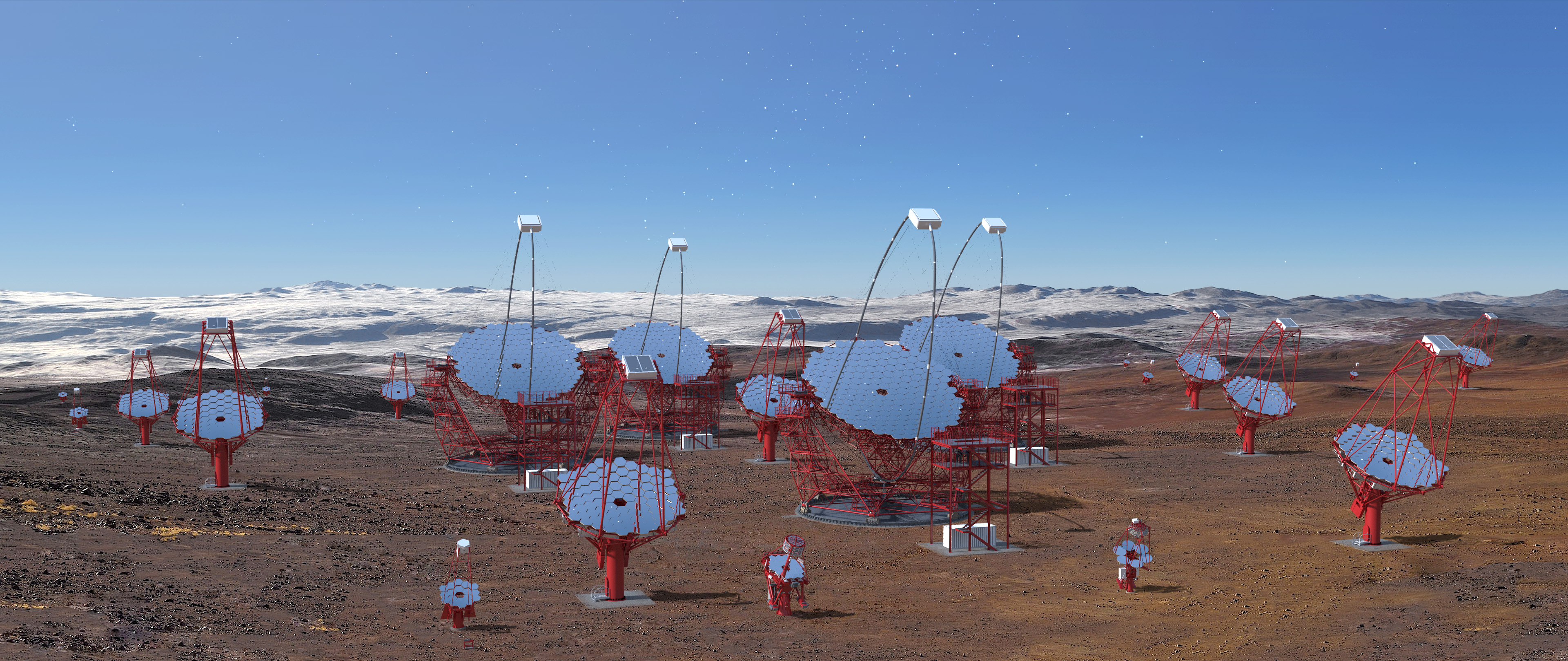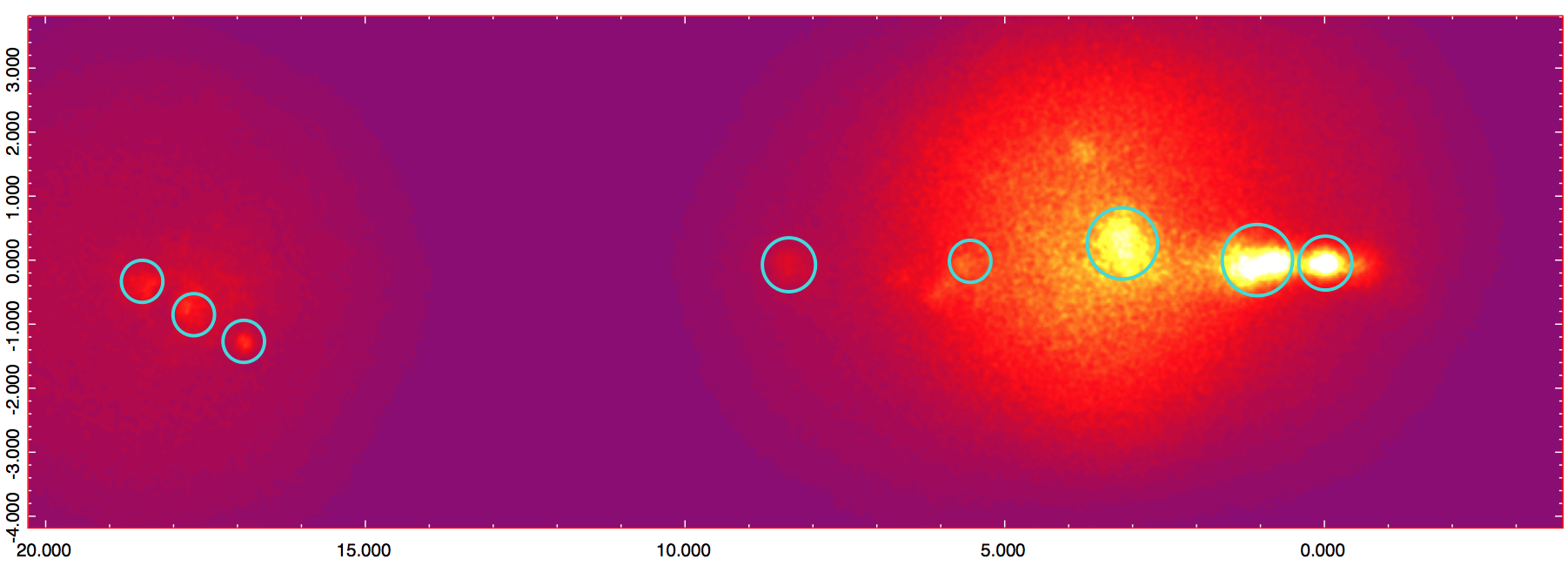
The Cherenkov Telescope Array (CTA) represents the next-generation Observatory for Cherenkov “imaging” atmospheric telescopes (IACTs), designed to observe from the ground gamma-ray sources at very-high energies (in the energy band from a few tens of GeV up to a few hundred of TeV). With more than 100 telescopes of three different sizes (4 m for the smallest, 12 m for the medium ones, and 22 m for the largest), located in the northern (in La Palma, in the Canary Islands) and southern hemispheres (in Paranal, in Chile), CTA will be the largest and most advanced very-high-energy gamma-ray observatory in the world. It will use its unprecedented accuracy and sensitivity to increase tenfold the number of known gamma-ray celestial objects and to address some of the most mysterious and intriguing questions in astrophysics.

The Italian National Institute of Astrophysics (INAF) contributes to CTA through the ASTRI project (Astrofisica con Specchi a Tecnologia Replicante Italiana). Born in 2011 as a “flagship” project” of the Italian Ministry for Education, University and Research (MIUR), ASTRI aims to provide to CTA a series of dual-mirror small-size telescopes (SST-2M ASTRI), as well as supporting the participation in the construction of other subsystems. The group of 50 SST telescopes will be installed at the CTA South site and will explore the uppermost end of the Very High Energy domain (up to a few hundred of TeV) with unprecedented sensitivity and angular resolution. They will be characterized by innovative technological solutions, such as the optical configuration of Schwarzschild-Couder type, a modular, light and compact focal-plane camera based on silicon photomultipliers, and a front-end electronic based on a specifically designed ASIC (Application-Specific Integrated Circuit). The viability of this innovative design has been successfully demonstrated with the ASTRI-Horn prototype. This telescope, installed in 2014 at the Serra La Nave site on Mount Etna (Sicily), is the first Schwarzschild-Couder telescope for gamma-ray astronomy to be built and tested; it saw its first light in May 2017 and, then, it achieved the detection of the Crab Nebula in December 2018. Currently the ASTRI Collaboration is also building a mini-array of 9 telescopes, based on the same design of the ASTRI-Horn prototype. They will be installed at the Teide Astronomical Observatory, operated by the Instituto de Astrofisica de Canarias (IAC), on Mount Teide, in the Canary island of Tenerife. The ASTRI mini-array will be operated by INAF based on a host agreement with IAC.
Our Institute is actively involved in the ASTRI project from both the scientific and technical point of view.

Several researchers collaborate to the “Astri/CTA Data Challenge” (ACDC), a project which aims to perform a complete end-to-end simulation of three years of observations with the ASTRI mini-array. Our activity starts with the selection of the observation targets. To this aim, we use a model of the TeV sky (derived from data collected with the current TeV telescopes, as well as with Fermi/LAT) suitably extrapolated to the ASTRI energy range, taking into account the theoretical models proposed for the various sources. Then, we proceed with the preparation of a realistic pointing plan. This takes into account, for each observing field, the visibility constraints for the observing site and the windows of useful observing time. Based on the pointing plan, we simulate the observations of nineteen Galactic and extra-galactic fields, which were selected for their scientific interest and include several classes of objects (such as pulsars, pulsar wind nebulae, AGN, supernova remnants, gamma-ray binaries and dwarf spheroidal galaxies), for a total of ~90 sources, either point-like or extended. Our task is to build a simulation of the sky comparable with the data we expect to collect with the ASTRI mini-array. The simulated data closely resemble real data, thus requiring the same effort of analysis and interpretation needed to interpret the data that ASTRI will take. Our task is to build a simulation of the sky comparable with the data we expect to collect with the ASTRI mini-array. The results of this activity will help us to maximise the scientific output and to optimise the analysis techniques for the ASTRI mini-array. Moreover, the simulated data set will be delivered to the community of potential INAF users, who will have the opportunity to learn the analysis techniques used in VHE gamma-ray astronomy.
In addition, our Institute contributes to the ASTRI Project Office with the Program Manager and the Quality Assurance manager. The former has the responsibility to supervise and coordinate all the project activities and, moreover, to manage directly the contracts with some industrial suppliers. The latter is in charge to monitor and verify the quality and reliability of the production processes and of the deliverables of the industrial suppliers.
